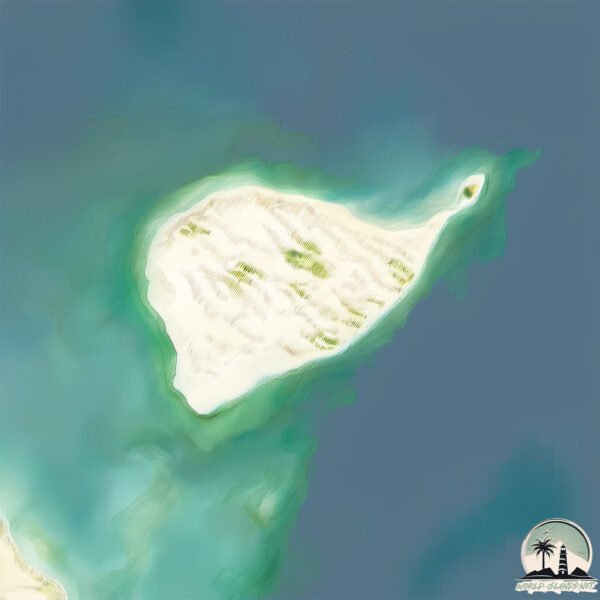Welcome to East wallabi , a Dry island in the Indian Ocean, part of the majestic Indian Ocean. This guide offers a comprehensive overview of what makes East wallabi unique – from its geography and climate to its population, infrastructure, and beyond. Dive into the details:
Geography and size of East wallabi
Size: 3.283 km²Coastline: 8.7 kmOcean: Indian OceanSea: Indian OceanContinent: Oceania
East wallabi is a Small Island spanning 3.3 km² with a coastline of 8.7 km.
Archipel: –
Tectonic Plate: Australia – A major tectonic plate covering Australia, New Zealand, and parts of the Indian and Pacific Oceans, known for its relative stability and occasional seismic activity.
The geographic heart of the island is pinpointed at these coordinates:
Climate and weather of East wallabi
Climate Zone: DryClimate Details: Hot Semi-Arid (Steppe) ClimateTemperature: Hot
Climate Characteristics: Features hot summers and mild to warm winters. Receives more rainfall than hot deserts but less than tropical savannas, leading to a somewhat more varied landscape.
Topography and nature of East wallabi
Timezone: UTC+08:00Timezone places: Australia/PerthMax. Elevation: 10 m Mean Elevation: 7 mVegetation: Cultivated LandTree Coverage: 13%
The mean elevation is 7 m. The highest elevation on the island reaches approximately 10 meters above sea level. The island is characterized by Plains: Flat, low-lying lands characterized by a maximum elevation of up to 200 meters. On islands, plains are typically coastal lowlands or central flat areas.
Dominating Vegetation: Cultivated Land
Vegetation: 3 vegetation zones – Moderately Diverse Island
Infrastructure and Travelling to East wallabi
Does the island have a public airport? no .
Does the island have a major port? no .
The mean population of East wallabi is 0 per km². East wallabi is Uninhabited. The island belongs to Australia .
Continuing your journey, Faure is the next notable island, situated merely km away.
Abrolhos Islands - The flight from East Wallabi Island to Geraldton - Awesome remote places
The Houtman Abrolhos (often called the Abrolhos Islands) is a chain of 122 islands and associated coral reefs, in the Indian ...
Abrolhos Islands - The flight from East Wallabi Island to Geraldton - Awesome remote places
The Houtman Abrolhos (often called the Abrolhos Islands) is a chain of ...
The Houtman Abrolhos (often called the Abrolhos Islands) is a chain of 122 islands and associated coral reefs, in the Indian ...
Fly over Abrolhos Islands & Pink Lake, lobsters hunting while snorkelling at East Wallabi Island.
The Houtman Abrolhos Islands, named so in the 16th century, lie 64 km ...
The Houtman Abrolhos Islands, named so in the 16th century, lie 64 km of the coast of Geraldton and are used as a base for rock ...
Landing at East Wallabi Island gravel runway
Photographs and video are copyright to Marc Russo See more of my work ...
Australia is classified as Developed region: nonG7: Developed economies outside of the Group of Seven, characterized by high income and advanced economic structures. The level of income is High income: OECD.
News – Latest Updates and Headlines from East wallabi
Stay informed with the most recent news and important headlines from East wallabi. Here’s a roundup of the latest developments.
Loading...
Please note: The data used here has been primarily extracted from satellite readings. Deviations from exact values may occur, particularly regarding the height of elevations and population density. Land area and coastline measurements refer to average values at mean high tide.

